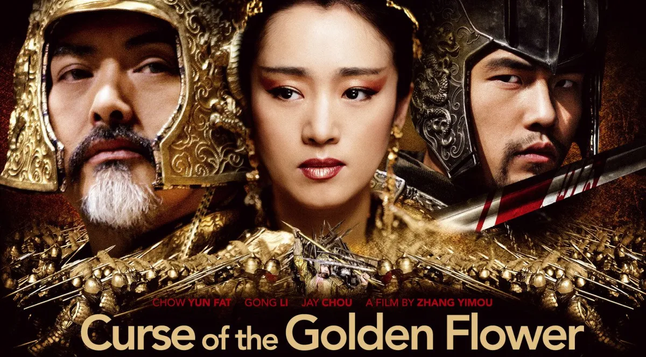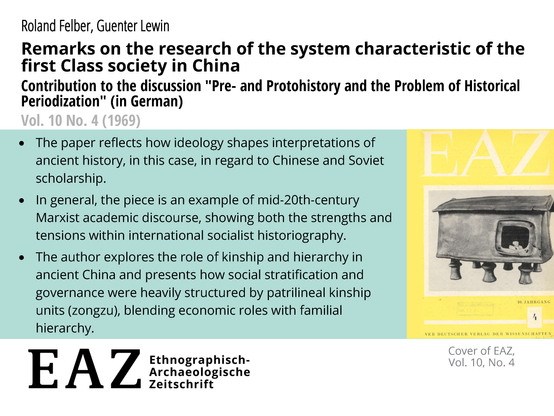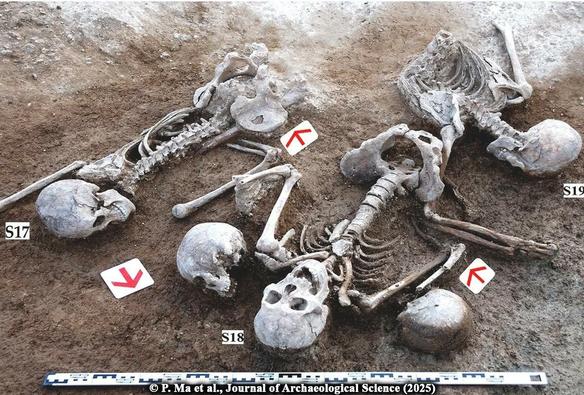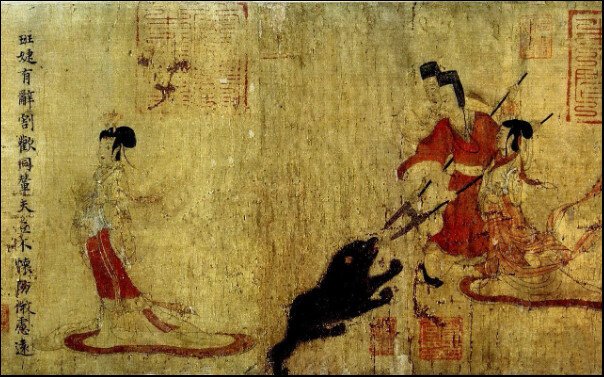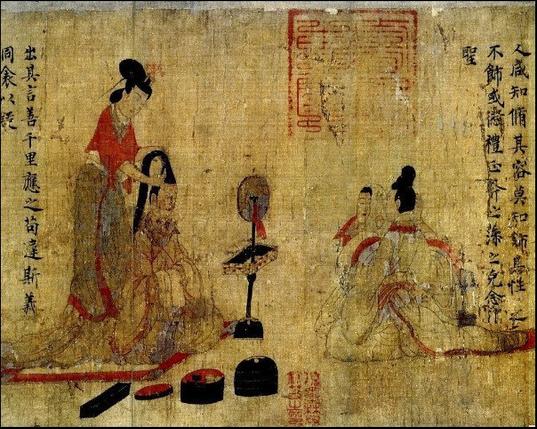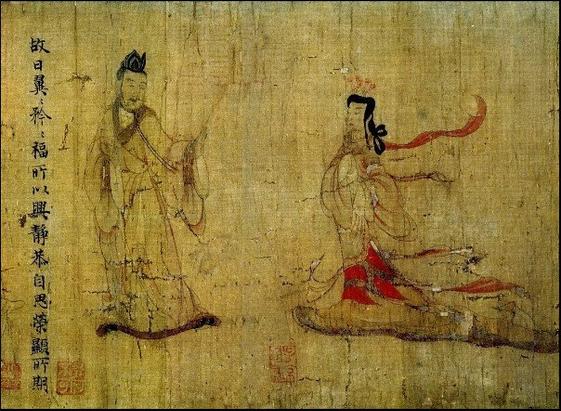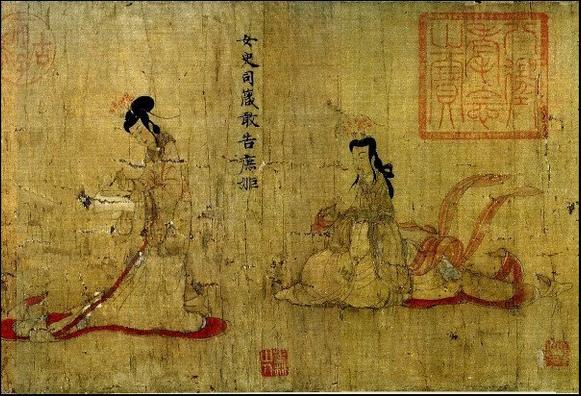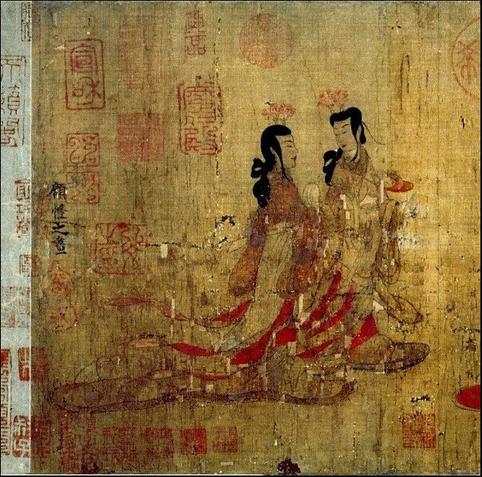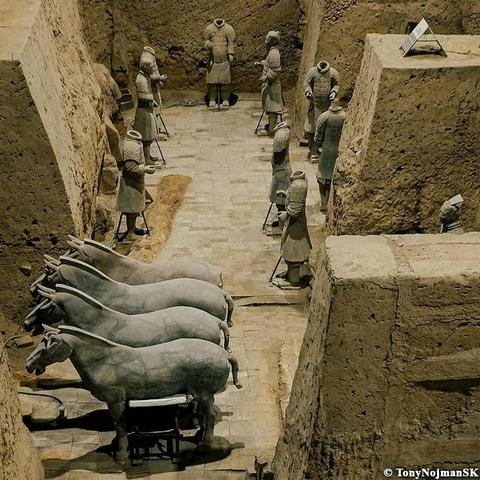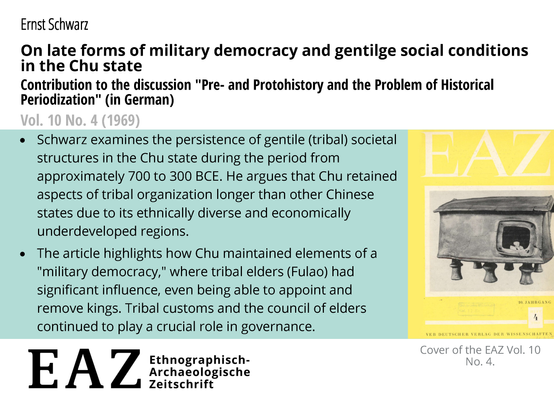AO THROWBACK - Explore the millennia-old mystery of Han purple a once-lost pigment from ancient China.
https://www.ancient-origins.net/artifacts-ancient-technology/han-purple-2800-year-old-artificial-pigment-quantum-020105
#ancientorigins #ancient #history #ancienthistory #historylovers #historyfacts #historymatters #archaeology #HanPurple #AncientChina #PigmentDiscovery
#ancientChina
Ancient Chinese star chart dated to 2,300 years ago may be the oldest ever, challenging astronomy history
A new study has re-ignited academic debate over the origins of the world’s earliest star chart, placing an ancient Chinese manuscript—the Star Manual of Master Shi—at the forefront of world astronomical history...
More information: https://archaeologymag.com/2025/05/chinese-star-chart-may-be-the-oldest-ever/
Follow @archaeology
#archaeology #archeology #archaeologynews #AncientChina #archaeoastronomy #starchart #astronomy
#WatchPartyAlert for #KungFuSat 5/24/25 at 12 Noon ET
ALL WELCOME at #ZHANGYimou's CURSE OF THE GOLDEN FLOWER (2006) 🌻
Starring #CHOWYunFat, #GongLi, and #JayCHOU. 🀄 SUBTITLED (I loathe dubbed movies)
📺 Tubi: https://link.tubi.tv/wHWGMXTvnTb
💵 For rent on YouTube: https://youtu.be/OFnq7LhWsUY?si=YubMSJFyKmwf760X
🖥️ DailyMotion: https://www.dailymotion.com/video/x8igbj4
🤦🏽 That other place: http://ok.ru/video/2121606892059
#HistoricalEpic #CostumeDrama #AncientChina #PalaceIntrigue
Thanks to @OldRustBucket for this week's movie suggestion 👍🏽
Here is a case study in Marxist methodology applied to non-Western societies, challenging Eurocentric models of historical development.
#AncientChina #MarxistHistory #EAZArchives #EAZ
https://doi.org/10.54799/HFTR5626
(24 Apr) A 2,000-year-old battle ended in fire, and a tree species never recovered https://s.faithcollapsing.com/10l6b Archive: ia: https://s.faithcollapsing.com/32h2t #ancient-china #ancient-warfare #archaeology #endangered-species #han-dynasty #save-the-trees #science
An ancient battle has driven a wetland species almost to extinction https://arstechni.ca/YBUE9 #endangeredspecies #ancientwarfare #ancientchina #savethetrees #Archaeology #handynasty #Science
Teeth from burial pit in Mongolia trace Han soldiers in the Xiongnu war
New information on a mass burial found at the Bayanbulag site in Mongolia, which is thought to hold the remains of Han warriors who participated in the Han-Xiongnu War, has been revealed by a recent bioarchaeological study...
More information: https://archaeologymag.com/2025/03/burial-pit-in-mongolia-han-soldiers-xiongnu-war/
Follow @archaeology
#archaeology #archeology #archaeologynews #anthropology #handynasty #xiongnuwar #ancientChina
Oldest section of China’s Great Wall discovered, pushing back its origin by 300 years
Archaeologists have unearthed what is now believed to be the earliest section of the Great Wall of China, predating previous estimates by approximately 300 years. This section dates back to the late Western Zhou Dynasty (1046 BCE–771 BCE) and the early Spring and Autumn Period (770 BCE–476 BCE)...
More information: https://archaeologymag.com/2025/02/oldest-section-of-chinas-great-wall-discovered/
Follow @archaeology
Despite being restricted by the male-created social conventions, there were cases of Chinese women who became celebrated poets, artists, calligraphers, historians, and even rulers. Below are some details of two such women, one the paradigm of virtue, the other more ambiguous and controversial.
Ban Zhao (41- c. 115 CE) was one of the most famous female writers and scholars in early China. She wrote commentaries on Confucian classics, and her most famous work remains her Nuje or “Instructions for Women” which expanded on the four virtues expected of women first outlined in the classic Liji ritual text. Although Zhao stressed that women should remain subservient to their husbands she did express a belief in the benefits of women educating themselves. The Nuje text was hugely influential, studied by countless generations of women.
Wu Zetian (625-705 CE), the concubine of Tang dynasty emperors Taizong (626-649 CE) and Gaozong (r. 649-683 CE), was officially made empress by the latter in 655 CE. On the death of Gaozong, she reigned as regent for her son Zhongzong (684 CE) and his successor and elder brother Ruizong (r. 684-690 CE). In 690 CE Wu Zetian went one step further and took the throne by declaring herself emperor, set up her court at Luoyang and declared the beginning of a new dynasty, the Zhou. Her reign, at least in Chinese tradition (which gives yet another insight into attitudes to women), was one of despotic terror punctuated by family assassinations and beset by political intrigues. Nevertheless, her ruthless approach did lead to the expansion of the state bureaucracy, and she was a great patron of Buddhist art, seen notably at the Longmen caves.
Illustration : Admonitions Scroll, also known as the Admonitions of the Court Instructress, by Gu Kaizhi, between the 5th to 8th century.
#china #ancientchina #archeology #history #art #arthistory #painting #womenfromhistory
Although Chinese men usually had only one wife, they did openly make use of courtesans and invited concubines to live permanently in the family home. Prostitution was an open part of town and city life, with officials and merchants frequenting houses where prostitutes plied their trade for the purposes of corporate entertainment.
Concubines, meanwhile, apart from the pleasures their charms might bring, often provided a family with the all-important male heir when the wife only produced daughters. They did not have the legal status of the wife as they were classed as servants and nor were the children of a concubine given equal status and inheritance rights as the children of the wife. The number of concubines in the household was only limited by the husband's means. The wife must never show any jealousy to her husband's concubines - it was also a grounds for divorce, but also it was thought there was a particularly nasty corner of hell awaiting jealous wives.
Concubines usually came from the lower classes and entered the households of the wealthier families in society. A girl from a richer family would only have been given as a concubine to an even richer family or the royal palace. It was not uncommon, though, for a younger sister to accompany a bride and live in the marital home of her sibling as a concubine.
Illustration : Admonitions Scroll, also known as the Admonitions of the Court Instructress, by Gu Kaizhi, between the 5th to 8th century.
#china #ancientchina #archeology #history #art #arthistory #painting #womenfromhistory
Marriage and children were the expected normal course for all adults, and only those men who could not afford a wife did not marry. During the Han Dynasty, for example, unmarried women brought a special tax on their family and women with babies were given a three-year exemption from tax and their husband a one-year exemption. Regarding the sex of children, sons were much more desired than daughters.
For upper-class women, their lives were perhaps more strictly controlled than at any other social level. Expected to remain within the inner chambers of the family home, they had only a very limited freedom of movement. Within the home, women did have significant responsibilities which included management of the household finances and the education of her children, but this did not mean they were the head of the family home.
Women of lower status, such as farmer's wives, were expected to work in the fields - especially in regions where rice was cultivated. As many farmers did not own their own land but worked it as tenants, their wives were, on occasion, subject to abuse from landowners. Many women were forced into prostitution in times of drought or crop failure. Women worked in the home weaving silk and caring for the silkworms that produced it. Some were called upon, like men, to perform the labor service which acted as a form of taxation in many periods of ancient China, but this was only in exceptional circumstances. By the Song dynasty (960-1279 CE) women had more freedom and were running inns and acting as midwives amongst other professions.
Illustration : Admonitions Scroll, also known as the Admonitions of the Court Instructress, by Gu Kaizhi, between the 5th to 8th century.
#china #ancientchina #archeology #history #art #arthistory #painting #womenfromhistory
The bride went to live with the groom in his house or that of his parents, keeping her family surname. Her transferral abode became a great procession when she was carried on a red bridal chair and her feet never touched the ground between the homes in order to ward off evil spirits. On arrival she met her husband, often it was the couple's first meeting. A marriage feast was held and the ancestral tablets were “informed” of the new arrival.
That a wife was not much more than a physical piece of her husband's property is further illustrated in the ancient practice of foot-binding. Girls from aged three upwards had their feet crushed in bindings for years in the belief that the resulting small feet would appeal to her future husband.
In Chinese law, a man could divorce his wife but she had no such right except if the husband particularly mistreated his wife's family. The accepted grounds for divorce were failure to bear a son, evidence of being unfaithful, lack of filial piety to the husband's parents, theft, suffering a virulent or infectious disease and talking too much. Further, a wife could not be divorced if she had no family to return to.
Another social convention was that widows should not remarry. Many did anyway amongst the lower classes, but the idea that the Fates and astrological charts had ordained that a particular couple should live together in matrimony was a difficult hurdle to get over in the case of a second marriage. An even greater barrier was a financial one as a widow did not inherit the property of her dead husband and so she had nothing to offer a new husband in that department.
Illustration : Admonitions Scroll, also known as the Admonitions of the Court Instructress, by Gu Kaizhi, between the 5th to 8th century.
#china #ancientchina #archeology #history #art #arthistory #painting #womenfromhistory
Another common introduction to a female character in such stories was the line “unfortunately she was born a woman”. A male child would grow up to contribute financially to the family and perpetuate the family name. In contrast, a woman could not earn money and one day would leave the family and join her husband's. Consequently, many baby girls were abandoned shortly after birth. Those girls who did survive were given such names as Chastity, Pearl, Thrift, or the names of flowers and birds in the hope that the girl would live up to that name and receive attractive offers of marriage.
Women were expected to excel in four areas: fidelity, cautious speech, industriousness, and graceful manners. A woman's virtue was a particularly valued attribute in Chinese society. Women deemed especially virtuous such as chaste widows were sometimes given the honor of a shrine, monument, or commemorative tablet after death or had their names published in honorific obituaries. This practice was especially popular following the work of the Neo-Confucian scholar Zhu Xi in the 12th century CE.
Marriages in ancient China were usually arranged by both sets of parents. Economic and social considerations were in everybody's minds. Neither did some parents wait until their children were of age as many marriages had been arranged when the couple were still young children or even babies. The typical marrying age was the early twenties for men and late teens for women, although child brides were not unknown despite the practice being forbidden by law. If a marriage had been arranged but the groom died close to the ceremony, the wedding might go ahead anyway and the bride joined her new family as a widow.
Illustration : Admonitions Scroll, also known as the Admonitions of the Court Instructress, by Gu Kaizhi, between the 5th to 8th century.
#china #ancientchina #archeology #history #art #arthistory #painting #womenfromhistory
Women in ancient China did not enjoy the status, either social or political, afforded to men. Women were subordinate to first their fathers, then their husbands, and finally, in the case of being left a widow, their sons in a system known as the “three followings” or sancong. Often physically ill-treated, socially segregated, and forced to compete for their husband's affections with concubines, a woman's place was an unenviable one.
Still, despite the harsh realities of living in a male-dominated society and being forever under the weight of philosophical and religious norms which were created by men to work for men, some women did break through these barriers. The practical realities of daily life meant many women could and did circumvent conventions, and some rose to live extraordinary lives producing great literature, scholarship, and even ruling the Chinese empire itself.
At least in theoretical terms, women's contribution, indeed necessity, to society was recognised in the principle of yin and yang. Even here, though, the male (yang) with its associated qualities is predominant and has associations subtly considered superior to the female (ying): hard versus soft, forceful v. submissive, level v. curved, light v. dark and so on.
Illustration : Admonitions Scroll, also known as the Admonitions of the Court Instructress, by Gu Kaizhi, between the 5th to 8th century.
#china #ancientchina #archeology #history #art #arthistory #painting #womenfromhistory
What if the Xia Dynasty's legends were more than myths? Unearth the hidden mysteries of mythical creatures and their influence on ancient China. How would history change with a touch of fantasy? Link: YouTube #AncientChina #MythicalCreatures #XiaDynasty #FantasyHistory #AI
New evidence reveals the source of mercury in the mausoleum of the first Qin emperor
Archaeological surveys in Xunyang City, in Ankang, Shaanxi province, have revealed the origins of the mercury found in the Mausoleum of Qin Shi Huang. Qin Shi Huang is renowned for uniting China and for having commissioned a gargantuan burial site, a complex that took 38 years to build with 700,000 workers.
More info: https://archaeologymag.com/2025/01/source-of-mercury-mausoleum-of-first-emperor/
Follow @archaeology
Rare terracotta warrior commander unearthed at First Emperor’s mausoleum
Archaeologists at the Mausoleum of Qin Shi Huang in Xi’an’s Lintong District, China, have uncovered a terracotta warrior believed to represent a senior military commander. This significant find is the first of its kind from Pit No. 2 since formal excavations commenced in 1994....
More information: https://archaeologymag.com/2024/12/terracotta-warrior-commander-unearthed-in-china/
Follow @archaeology
#archaeology #archeology #ancientchina #qinshihuang #terracottaarmy
Despite increased millet farming, herders in Xinjiang's Keriya Valley #ancientchina stuck to traditional grazing 🐑 #isotope #palaeodiet study reveals.
Most animals grazed on C3 plants in oases during #BronzeAge /#IronAge, but some surprising C4 signals in cattle & camel remains.
🏺 #archaeology
Dietary reconstruction of dome...
Ernst Schwarz's article discusses how the Chu state in ancient China retained elements of gentile (tribal) society and "military democracy" well into the period from 700 to 300 BCE, where tribal elders had significant influence over governance.
#AncientChina #ChuState #GentileSociety #EAZ #EAZArchives
https://doi.org/10.54799/QHQO4701
〰️📚 Book Review 📚🪭
Check out Karen’s #bookreview of A SONG TO DROWN RIVERS by Ann Liang. #bookreview #AncientChina #ASongtoDrownRivers #NetGalley
https://baronessbooktrove.com/a-song-to-drown-rivers-by-ann-liang/


